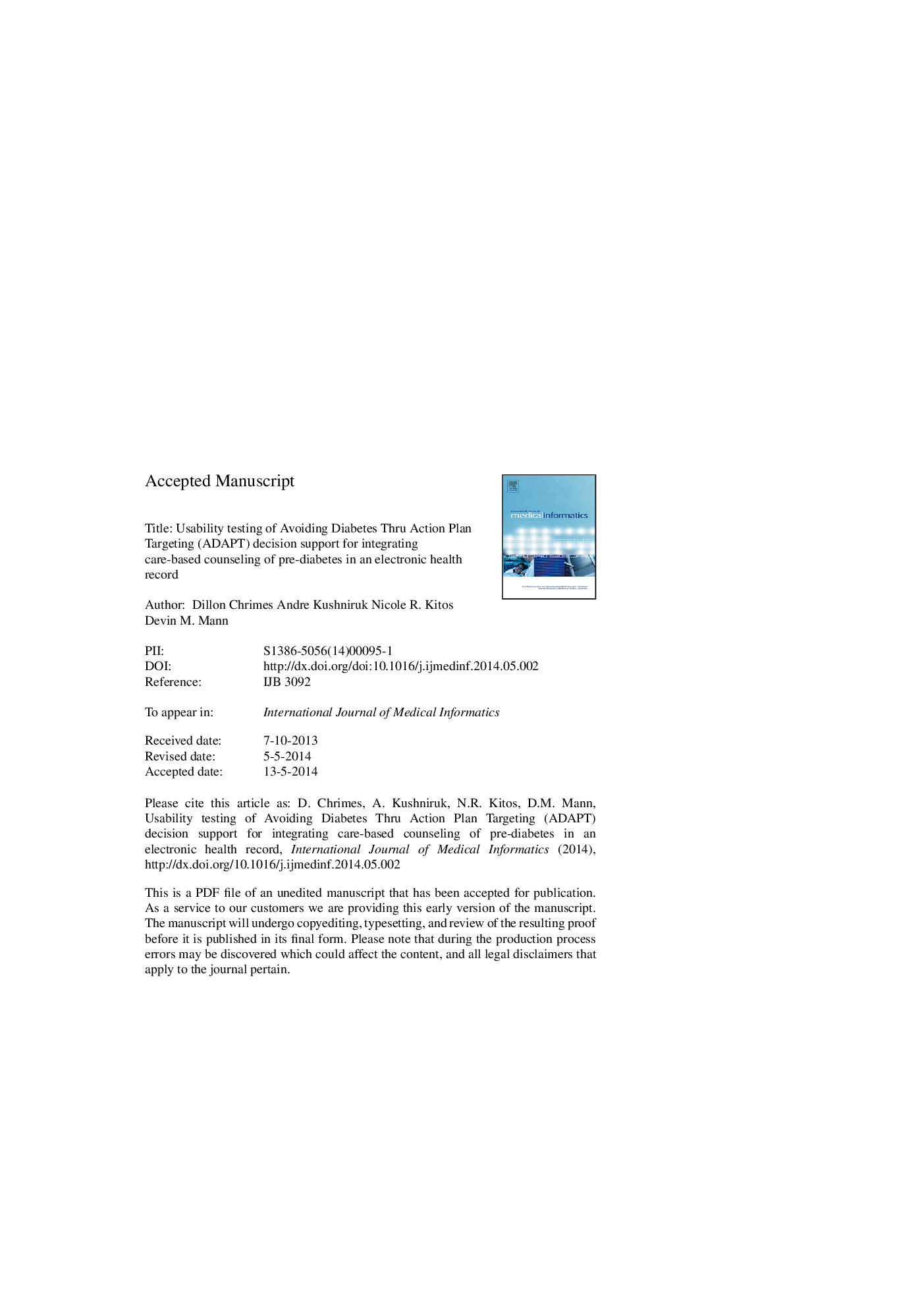| Article ID | Journal | Published Year | Pages | File Type |
|---|---|---|---|---|
| 6926960 | International Journal of Medical Informatics | 2014 | 42 Pages |
Abstract
This study demonstrated that “think-aloud” protocol analysis with “near-live” clinical simulations provided a successful usability evaluation of a new primary care pre-diabetes shared goal setting tool. Each phase of the study provided complementary observations on problems with the new onscreen tool and was used to show the influence of the ADAPT framework on the usability, workflow integration, and communication between the patient and provider. The think-aloud tests with the provider showed the tool can be used according to the ADAPT framework (exercise-to-diet behavior change and tool utilization), while the clinical simulations revealed the ADAPT framework to realistically support patient-provider communication to obtain behavioral change contract. SDM interactions and mechanisms affecting protocol-based care can be more completely captured by combining “near-live” clinical simulations with traditional “think-aloud analysis” which augments clinician utilization. More analysis is required to verify if the rich communication actions found in Phase II compliment clinical workflows.
Related Topics
Physical Sciences and Engineering
Computer Science
Computer Science Applications
Authors
Dillon Chrimes, Nicole R. Kitos, Andre Kushniruk, Devin M. Mann,
